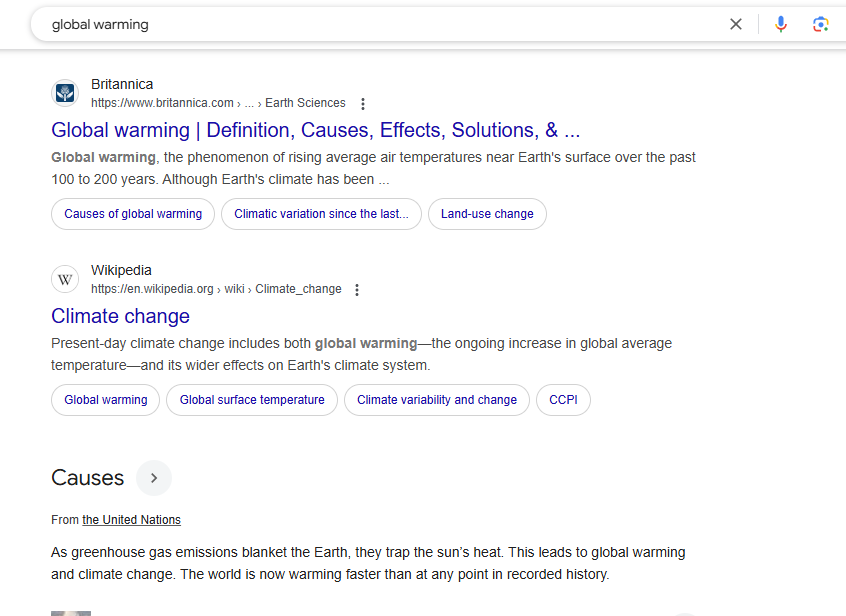
Businesses plus website owners across the board aspire to obtain rank higher on google. Each website owner and business operator attempts to achieve position one on search engine results pages (SERP). The ranking position of your search results produces higher website visitors along with better visibility as well as increased site authority. These basic yet powerful techniques will help you enhance your position on Google search results.
1. Focus on High-Quality Content for Rank Higher on Google
Google rewards valuable content which matches users’ needs. Your content needs to be highly researched with excellent engagement value using original material which supplies answers to consumer questions. You need to refresh your website content regularly for staying contemporary.
Quality content enables your audience to develop trust while they remain longer on your site. The combination of higher page durations and decreased bounce rates indicates to Google that your content provides worth to users. Your content writing should address topics completely as you deliver extensive insights into each subject. The combination of specific examples with relevant statistics and case studies proves to enhance both credibility and usefulness of the content.
Tips for Quality Content:
- Use clear and simple language.
- Handle the most frequent questions that arise in your market field.
- You should add images together with videos along with infographics to boost user engagement.
- Keep content updated and relevant.
- Your articles should expand to a lengthy span ranging from 1000 to 2000 words for detailed information.
2. Optimize Your On-Page SEO : rank higher on google
Website optimization under on-page SEO focuses on modifying website content and structural elements. The optimization enables Google to better understand your website pages which results in betterrank higher on google
Each web page must focus on a main keyword with supplementary related keywords. The content needs to be easily readable through the combination of headings along with bullet points in addition to short paragraphs. Search engine user satisfaction combines with visitor experience because Google evaluates on-page elements as part of both sets of criteria.
- Key On-Page SEO Elements:
- Title Tags: Include your main keyword in the title.
- Meta Descriptions: Write a compelling description with your keyword.
- Appropriate headings at H1, H2 and H3 levels need to organize your content.
Each URL should have short length and target specific keywords.
- Internal Links: Link to other pages on your site to improve navigation.
- Image Optimization: Use descriptive file names and alt texts for images.
Build Quality Backlinks
Your website links appear when other websites incorporate your URL. Your site receives credibility and authority status through backlinks detected by Google.
Finding excellent link referrals from trusted sites creates substantial positive effects on your website rankings. The search engines value high-quality over numerous low-quality backlinks. You should refrain from building links through spam-like or below-standard practices because these might trigger penalties from search engines.
How to Get Quality Backlinks:
- Your goal should be writing guest posts that reputable websites would accept.
- Your content material should be distributed across active social media channels.
- Collaborate with industry influencers.
- You should develop content with link-attracting potential through guide creation and research publications.
- Your site should be submitted to established directories which are well-known online.
4. The website speed along with mobile usability needs enhancement
Websites that provide fast loading times together with mobile compatibility receive preferred rankings from Google. Slow websites create negative impacts that damage both your search engine rankings as well as user satisfaction.
A fast website publication both increases search engine rankings as well as delivering superior user satisfaction performance. Perform website speed diagnostics through Google PageSpeed Insights in order to solve identified performance problems. A site needs to be both mobile-responsive and optimized for mobile devices since mobile browsing has gained prominence
- Ways to Improve Website Speed:
- The size of images should be optimized to make them smaller.
- Select a quick and dependable hosting service.
- Enable browser caching.
- Minimize CSS, JavaScript, and HTML.
- Enterprises must install a content delivery network (CDN).
5. Use Keywords Strategically
Build your content by studying appropriate keywords then naturally include them within your text. Questions regarding keyword stuffing should be avoided because it produces negative effects on your search ranking positions.
Starting your content creation process requires knowledge of search intent because keyword selection depends on it. You should choose keywords that include short-tail variations alongside long-tail variations in order to attract multiple search terms. You can find important keywords through the use of Google Keyword Planner along with Ahrefs.
- Where to Place Keywords:
- Page titles and headings.
- First 100 words of your content.
- Image alt texts.
- Meta descriptions.
- The anchor text appears next to both internal and external link destinations.
6. Monitor and Update Regularly
SEO is an ongoing process. Check your website performance with the help of Google Analytics along with Google Search Console tools. You should routinely maintain outdated material while repairing all technical problems you encounter.
Google identifies active and relevant content through keeping website pages updated with fresh material. The content needs regular checks for broken links while replacing old statistics to keep its value and accuracy maintained.
Monitoring Tools:
- Google Analytics: Track visitor behavior and traffic.
- Through Google Search Console users can track search performance and address errors that occur.
- SEMrush or Ahrefs: Analyze keywords and backlinks.
7. Optimize for Voice Search
Voice search optimization provides you with an advantage over your competitors because of its growing popularity. The optimization should include both conversational search terms and brief direct responses.
Voice queries from users tend to feature extended natural speech patterns. You must choose keywords with a question format along with local search orientation to efficiently attract voice search visitors.
Voice Search Optimization Tips:
- Natural language usage should combine with question-based phrases.
- Frequently asked questions should be answered through the creation of dedicated FAQ pages.
- Implement local search optimization to capture both local queries and queries using “near me” search terms.
- Add specific keywords that have multiple words into your content material.
8. Leverage Local SEO
Your physical locations will rise in the search results when users seek information about their specific areas.
Businesses that provide services to a distinct territorial area need local SEO for maximizing awareness. Verify all business contact data appears in the same format within multiple online directories and directories.
Local SEO Best Practices:
- Claim registration and optimization of the Google Business Profile represents your business for success.
- Your business should promote customer evaluations while providing answers to viewers’ feedback.
- Fitting relevant local phrases into both your content text and meta tag section should be done.
- Businesses should list themselves in major local directories including Yelp and Bing Places.
9. Improve User Experience (UX)

Google uses user experience quality as a key element during its ranking process. The usability design of your website creates user involvement which results in fewer visitors leaving the page.
A user gets a positive experience from sites which display fast speeds along with intuitive navigation systems and exciting material. A clean accessible design should be the basis of your website structure.
UX Improvement Tips:
- The site must provide users with straightforward navigation together with obvious menu options.
- The website requires a responsive design approach which can work across all devices.
- Users will benefit from content that stands out because of easy-to-read fonts combined with color differences.
- Implement intuitive calls-to-action (CTAs).
10. Utilize Schema Markup
When you add Schema markup into your content the core search engine understands your information better and your site may gain enhanced search result visibility through rich snippets.
Structure your data to achieve better chances for rich results appearance in search engine results and consequently enhance your click-through rates.
How to Use Schema Markup:
- Structured data should be added to mark up essential content for review sections and product listings and event-specific details.
- Component testing for schema markup can be done through Google’s Structured Data Testing Tool.
- The website should implement schema markup to organize information about articles together with business directories and Frequently Asked Questions (FAQs).
Simple and effective strategies enable you to improve your position in Google search results pages. By adding value for website visitors Google will offer better visibility levels to your content. Make sure to optimize your search engine performance consistently while following search engine trends which help you improve and keep your rankings.Consulting a digital marketing expert can further enhance your SEO efforts.
